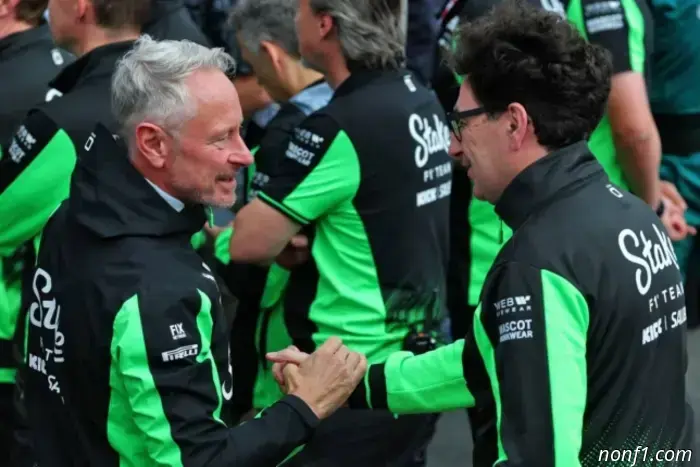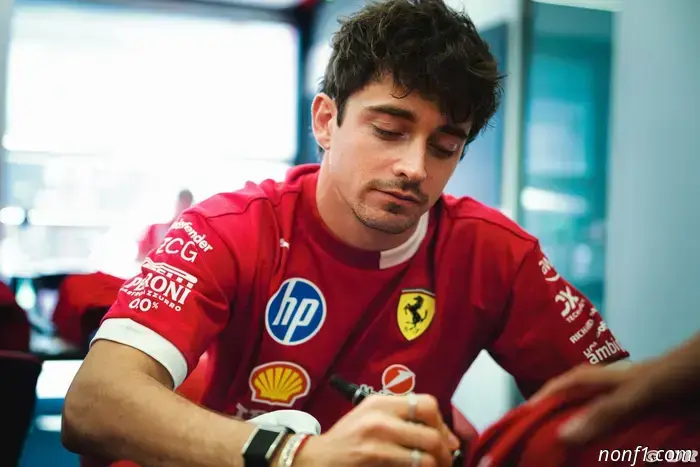
Frederik Vesti on the main differences between F1 and hypercars.
Frederik Vesti, who became the 2023 Formula 2 runner-up, now combines his role as a Mercedes reserve driver with racing in endurance events.
Last year the young Dane spent the season in the European Le Mans series, including making his debut in the 24 Hours of Le Mans, and this year he is competing in the American IMSA championship in the GTP category for the Cadillac Whelen team. In the Le Mans marathon he also raced in the same crew with Jack Aitken and Felipe Drugovich, but their hypercar, the Cadillac V-Series.R, didn’t make it to the finish.
Mercedes’ press office asked Frederik to talk about the main differences between driving a Formula 1 car and a modern sports prototype.
Frederik Vesti: “Both types of machinery are fantastic racing cars, but of course they are very different. The most obvious difference is that a sports prototype has a roof and you sit in a closed cockpit, so the oncoming airflow doesn’t get in. So, first of all, you don’t feel the wind, and you also can’t see the wheels.
For example, it’s quite hard to keep track of the front wheels not locking under braking, whereas in a Formula 1 car you can always see if the front wheels lock up.
The next difference is cornering speed. The top speeds of these cars are fairly comparable — roughly around 340 km/h — but an F1 car is lighter and generates more downforce, so your neck really feels all the G‑forces.
Behind the wheel of a hypercar you just fly down the straights, but because it’s heavier, cornering speeds are somewhat lower, and I can say for sure that driving these cars is just as demanding.
In prototypes we race in endurance events that last up to 24 hours. Over that day the weather can change many times. The track can be dry, wet, then dry again, and we also race at night, which brings its own serious challenges. Especially if, after working behind the wheel of a Formula 1 car, you jump into the cockpit of a prototype.
Perhaps the next point will sound a bit dull, but in hypercars while driving we can change the settings of the front and rear anti‑roll bars — i.e., make the suspension stiffer or softer. And that’s a very useful and effective system. Similar systems were once used in Formula 1, but then they were banned by the technical regulations.
Finally, it’s worth stressing that endurance races feature machinery from several different classes at the same time, so there can be up to four times as many cars on track as in a Formula 1 race. And they’re all there at once, so you can imagine how dense the traffic can be. It’s absolute chaos!
But it’s all very interesting, and to win in such races you have to take risks.”


Other articles
 Whitley: The goal is to get the team promoted to the top league.
Less than six months remain until the 2026 preseason tests, and at the end of January the drivers of Audi's factory team will take the new cars out onto the track in Barcelona for the first time...
Whitley: The goal is to get the team promoted to the top league.
Less than six months remain until the 2026 preseason tests, and at the end of January the drivers of Audi's factory team will take the new cars out onto the track in Barcelona for the first time...
 Leclerc remains loyal but is facing a career crisis - Danner
Formula 1 | With Ferrari frequently concentrating on Lewis Hamilton's challenging transition this season, Christian Danner thinks the team's steady top (...)
Leclerc remains loyal but is facing a career crisis - Danner
Formula 1 | With Ferrari frequently concentrating on Lewis Hamilton's challenging transition this season, Christian Danner thinks the team's steady top (...)
 Perez's contract with Cadillac may be announced in Monza.
PlanetF1 reports that confirmation of Sergio Pérez's contract with Cadillac F1 is expected in the coming weeks — reportedly confirmed by several different sources.
Perez's contract with Cadillac may be announced in Monza.
PlanetF1 reports that confirmation of Sergio Pérez's contract with Cadillac F1 is expected in the coming weeks — reportedly confirmed by several different sources.
 Domenicali will discuss the new sprint format with the teams.
Stefano Domenicali plans to discuss with the teams the issue of a reversed starting order in sprints...
Domenicali will discuss the new sprint format with the teams.
Stefano Domenicali plans to discuss with the teams the issue of a reversed starting order in sprints...
 In Monza they expect to set an attendance record.
The Italian national automobile club ACI announced that all tickets for the race at Monza have sold out, even though there is still almost a month to go...
In Monza they expect to set an attendance record.
The Italian national automobile club ACI announced that all tickets for the race at Monza have sold out, even though there is still almost a month to go...
 Zak Brown: Formula 1 is at the center of our universe
McLaren Racing is a unique company, since its teams this year have competed successfully in Formula 1, IndyCar and Formula E. And plans include a return to the WEC...
Zak Brown: Formula 1 is at the center of our universe
McLaren Racing is a unique company, since its teams this year have competed successfully in Formula 1, IndyCar and Formula E. And plans include a return to the WEC...
Frederik Vesti on the main differences between F1 and hypercars.
Mercedes' press office asked Frederik Vesti to talk about the main differences between piloting a Formula 1 car and a modern sports prototype...
